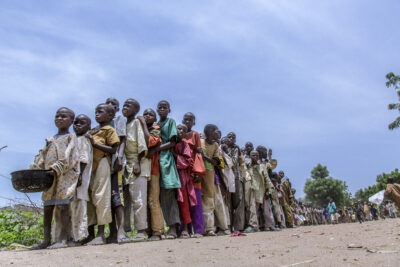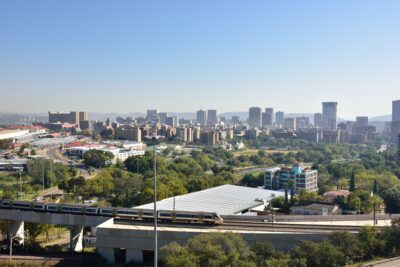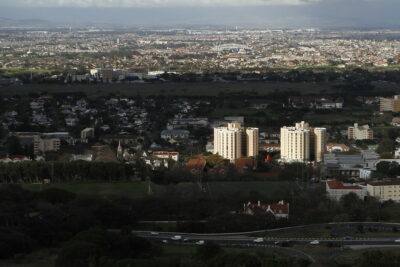As the background for conflict in the twenty-first century has rapidly changed, the United Nations (UN) and other actors, such as the African Union (AU) and Regional Economic Communities (RECs), have had to transform peacekeeping from a process conducted by impartial military observers to one carried out by more robust and offensive entities. Consequently, this has resulted in a blurring of the distinction between peacekeeping and peace enforcement. The United Nations Force Intervention Brigade (FIB) in the Democratic Republic of Congo (DRC) is one such peacekeeping operation that can be credited for redefining the field and changing the meaning of having peacekeepers present in any host community.
The FIB was established in March 2013 following the signing of the Framework Agreement for Peace, Security, and Cooperation for the DRC and the Region,1The Peace, Security, and Cooperation Framework Agreement for the Democratic Republic of the Congo and the Region was signed on February 24, 2013, by Angola, Burundi, the Central African Republic, the DRC, the Republic of the Congo, Rwanda, South Africa, South Sudan, Tanzania, Uganda, and Zambia. For details, see http://www.un.org/wcm/webdav/site/undpa/shared/undpa/pdf/SESG%20Great%20Lakes%20Framework%20of%20Hope.pdf, accessed May 24, 2015. and adoption of the United Nations Security Council Resolution (UNSCR) 2098.2UN Security Council Resolution 2098 (March 28, 2013), UN Doc. S/RES/2098, para. 9. See http://www.un.org/en/ga/search/view_doc.asp?symbol=S/RES/2098 (2013), accessed July 26, 2015. UNSCR 2098 was supported by reports which called for UN peacekeeping to evolve and adapt to the changing times, especially through more robust peacekeeping missions.3United Nations, Special Report of the Secretary-General on the Democratic Republic of the Congo and the Great Lakes Region, UN Doc. S/2013/119, February 27, 2013. Similarly, the FIB was designed to complement ongoing efforts in peacekeeping undertaken by the United Nations Stabilization Operation in the Democratic Republic of Congo (Mission de l’Organisation des Nations Unies pour la Stabilisation en République Démocratique du Congo, or MONUSCO). The FIB is considered to be a product of collective security, epitomized by the collaborative discussions among the AU, the Southern African Development Community (SADC), and the International Conference for the Great Lakes Region (ICGLR), on how to bring lasting peace to the DRC. It was therefore given the mandate to pursue and neutralize all armed groups and hostile forces in the eastern part of the country.
The brigade currently comprises approximately 3,000 forces from three countries in the SADC region—Malawi, South Africa, and Tanzania.4Scott Sheeran and Stephanie Case, “The Intervention Brigade: Legal Issues for the UN in the Democratic Republic of the Congo,” International Peace Institution, November 2014. See http://www.scribd.com/doc/267461654/The-Intervention-Brigade-Legal-Issues-for-the-UN-in-the-Democratic-Republic-of-the-Congo#scribd, accessed July 26, 2015. The FIB’s command and control fall under MONUSCO broadly, reflecting the need to avoid overlapping and competing structures in peace support operations. It must be emphasized, however, that the FIB retains some level of autonomy in implementing its mandate, with leeway to carry out its uniquely branded offensive operations focused on the restoration of normalcy in the eastern DRC.
The FIB has a chapter VII mandate5Chapter VII of the UN Charter is titled, “Actions with Respect to Threats to the Peace, Breaches of the Peace and Acts of Aggression,” and it allows the international body to use force towards in pursuit of peace and security. since its expressed role is to neutralize armed groups responsible for destabilizing the DRC, especially the eastern Congo. This represents the first time the UN is implementing a chapter VII mandate to its fullest sense—that is, deploying a combat force to carry out targeted offensive operations, including the use of deadly force, against “hostile forces” or armed groups. These groups are clearly outlined in UNSC resolution 2098 to include the “M23, the FDLR [Forces Démocratiques de Libération du Rwanda, or Democratic Liberation Forces of Rwanda], the ADF [Allied Democratic Forces], the APCLS [Alliance des Patriotes pour un Congo libre et souverain, or Alliance of Patriots for a Free and Sovereign Congo], the LRA [Lord’s Resistance Army], the National Force of Liberation (FNL), the various Mayi-Mayi groups and all other armed groups.”6See UN Security Council Resolution 2098 (March 28, 2013), UN Doc. S/RES/2098, paragraph 8, 12(b).
During its inception, the FIB was given a one-year mandate (up to March 31, 2014). During that first year, the FIB was credited with disarming several armed groups in the eastern Congo, chief among which was the Mouvement du 23 Mars (M23) rebellion. The brigade carried out targeted offensive initiatives, sometimes pursuing armed groups in localities where they were hiding. In the eastern Congo, the FIB has renewed hope that the objectives of securing the DRC and restoring state authority are achievable.
While some observers are cautious regarding the legal implications of having such a robust force—especially as the FIB is seen to be engaging in “peace enforcement” and “combat operations”7Sheeran and Case, “The Intervention Brigade: Legal Issues for the UN in the Democratic Republic of the Congo.”—overall, the brigade has positively transformed the practice of peacekeeping at systemic, strategic, operational, and tactical levels.
At the systemic level, the FIB has contributed to the relative stability the DRC now enjoys, especially by disarming recalcitrant armed groups such as the M23, which was defeated in November 2013. The FIB was established following several reports highlighting the changing dynamics of the conflict, particularly the recurrent waves of violence in the eastern Congo, that were accompanied by serious human rights violations, including sexual and gender-based violence. The situation was exacerbated by the continued weak capacity of the Congolese state, especially apparent in the national army and police, to safeguard the national territory and protect civilians effectively. The FIB was to address the persistent challenge of foreign armed groups who were taking advantage of these power and security vacuums in the eastern Congo and engaging in the illegal exploitation of resources.
A foremost objective of the FIB was to neutralize these armed groups and subsequently pave the way for reestablishing the Congolese state authority. The FIB has notably played a huge role in strengthening the capacity of security sector actors in the DRC, especially the military. In fact, the intervention brigade has been carrying out offensive operations alongside the Congolese army, the Armed Forces of the Democratic Republic of Congo (Armées de la République Démocratique du Congo, or FARDC). Following the defeat of the M23, political and diplomatic processes ensued, leading to the signing of the Nairobi Declaration on December 12, 2013. These political processes subsequently paved way for the implementation of disarmament, demobilization, and reintegration (DDR) in the DRC.
Also at the systemic level, the FIB continued to reshape the practice of peacekeeping, particularly by underscoring the imperative for “Africanized” peacekeeping missions composed of military, police, and civilian personnel who have the necessary cultural, linguistic, and geographical fluency to tackle the challenges at hand. These currently include Malawian and South African forces, as well as Tanzanians, many of whom speak Kiswahili, a language also used in the DRC. This facilitates more effective intelligence gathering and community outreach efforts by the brigade.
At the strategic level, the FIB provides a testament to the benefits of committed and dedicated collaboration among the UN, AU, and RECs in peacekeeping. The coming together of the UN, AU, SADC, and ICGLR to conceptualize and operationalize the FIB demonstrates that hybridization in peacekeeping can work, especially if each intergovernmental organization is allowed to bring to the table its interoperable strengths. African countries provide the troops and equipment to form the brigade, while the UN provides the funding and logistical coordination. When peacekeeping operations are undertaken cooperatively, positive results are easier to achieve.
At the operational level, the FIB is under MONUSCO, which still gives the UN an overarching role in coordinating peacekeeping in the DRC. This reporting relationship is very important because it avoids duplication and overlapping, and ensures that peacekeepers in the country are guided by similar doctrine. This also harmonizes the peacekeeping processes and ensures that the brigade benefits from the support that is accorded to UN peacekeepers.
Finally, at the tactical level, the evident transformation of the situation in the DRC since the deployment of the FIB is encouraging. The FIB with its 3,000 forces possesses a measure of robustness and agility compared to the 20,000 forces–strong MONUSCO, and observers are quick to highlight the considerable success the intervention brigade has managed to record in its one year of operation, especially in neutralizing armed groups. This could be thanks to the easier coordination made possible by the contribution of forces by only three countries. Not only does the intervention brigade engage in targeted and offensive attacks in pursuit of the armed groups in the eastern Congo; it does so while stressing the imperative to work closely with the FARDC. This was apparent in the FIB’s collaboration with the FARDC to defeat M23—a development which renewed faith in the role that can be played by the Congolese army in securing the DRC territory.
Although a sense of euphoria presently surrounds the intervention brigade, some degree of caution is necessary. The FIB faces a number of challenges at many levels. For example, although the location of the FIB within MONUSCO prevents duplication, in some case it curtails the quick turnaround of decisions. Being part of MONUSCO has meant the brigade is governed by the same bureaucracies and confronted by the same challenges that have bedeviled the United Nations Peacekeeping Force in the DRC since 1999.
Another challenge facing the FIB is the reality of a weakly capacitated Congolese army. Since the intervention brigade was tasked to work closely with the national military of the DRC, its success and effectiveness depend partly on the commitment, capability, and professionalism of the FARDC in joint operations. The Congolese army must be strengthened and professionalized if DRC is to be stabilized.
Additionally, the FIB has not yet managed to disarm some key armed groups in the DRC, including the FDLR and the ADF. In 2014, UN Security Council Resolution 2147 extended the FIB’s mandate, but how the brigade manages to deal with the threat of the remaining armed groups remains to be seen.
Despite these challenges, the Force Intervention Brigade has, without doubt, transformed the peacekeeping landscape in the DRC and introduced new and definitive ways of navigating the ever-changing terrain of conflict in Africa. In fact, lessons may be drawn on the FIB’s success in the DRC for other peacekeeping operations dealing with a conflict environment in Africa that is increasingly risky and more dynamic. The efforts of the brigade have heightened the need for peacekeeping missions not only to be dynamic back, but to respond to the emerging realities of the conflicts they are addressing. Ultimately, the FIB’s composition of troops from African states and its deployment following collaborative discussions by the UN, AU, SADC, and ICGLR on the need to bring lasting peace to the DRC, has brought to life the mantra of “African-centered solutions to peace and security challenges.”













Pingback: Can the UN patch things up in Congo? – Nalingi Congo
Pingback: Can the UN patch things up in Congo? | Silent War Journal
Pingback: Peacekeeping Contributor Profile: Tanzania | Providing for Peacekeeping